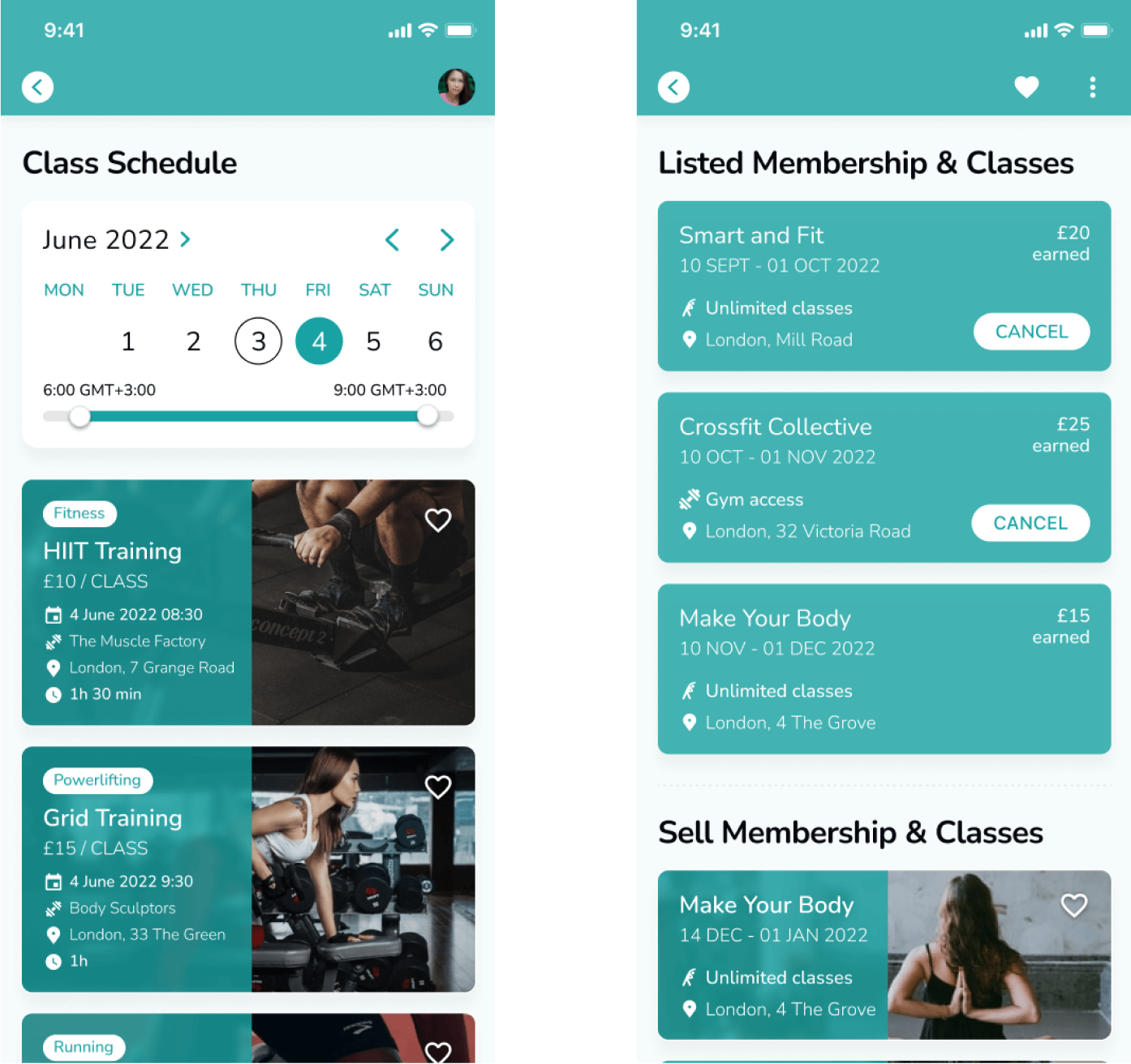Smartphones and tablets are gateways to commerce, entertainment, and information, integrated seamlessly into everyday life. The market is constantly expanding, as, according to Similarweb, almost 64% of all traffic was mobile in 2023, with a steady growth rate during the last decade.
For companies navigating this dynamic landscape, mobile application development services play a crucial role in securing a foothold.
This begs a critical question: how do you choose the right development approach for your app? The debate often boils down to two key options: cross-platform vs. native app development. Each path holds its own set of advantages and drawbacks, impacting everything from performance and cost to platform reach and user experience.
In this deep dive, we’ll dissect the intricacies of both approaches, providing a comprehensive comparison for discerning developers and businesses. By delving into key factors like performance, development time, features, and maintenance, we’ll try to provide everything you need to make the most informed decision for your next mobile app venture.
What is Cross-Platform Development?
Cross-platform development is a software engineering approach that allows developers to build mobile apps for multiple platforms (iOS, Android, etc.) using a single codebase. Think of it as a universal translator for app development, where one set of instructions can be understood by different operating systems. This streamlined approach offers several core principles:
- Write Once, Run Anywhere (WORA): Code written for one platform is translated for others, maximizing code reuse and efficiency.
- Unified Development Environment: Developers work with a single set of tools and frameworks, reducing learning curves and development times.
- Shared Logic and UI Components: Common app functionalities and user interface elements can be defined once and deployed across platforms.
Popular Cross-Platform Frameworks
With a plethora of options available, choosing the right framework can be daunting. Let’s explore some of the most popular choices:
- React Native: Backed by Facebook, React Native leverages JavaScript and its powerful React library to build dynamic and performant apps. Its robust community and extensive library support make it a popular choice.
- Flutter: Developed by Google, Flutter utilizes its own Dart programming language and offers a unique widget-based UI system. Its hot reload feature allows for real-time code updates, improving development speed.
- Xamarin: From Microsoft, Xamarin utilizes C# and provides native-like performance through platform-specific code integration. Its tight integration with Visual Studio makes it ideal for .NET developers.
Advantages of Cross-Platform Development:
- Cost-Efficiency: One codebase translates to lower development costs compared to creating separate native apps for each platform.
- Faster Development Speed: Using familiar tools and platforms shortens development cycles, allowing for quicker app launches.
- Code Reusability: Shared code across platforms minimizes maintenance efforts and promotes consistency.

What is Native Mobile App Development?
Native app development involves building apps for specific platforms (iOS or Android) using their native programming languages and tools. This approach prioritizes deep integration with the platform’s features and capabilities, allowing precise utilization of every functionality that the platform in question can offer.
Advantages of Native Apps
- Superior Performance: Native apps leverage the underlying platform’s capabilities, leading to smoother animations, faster response times, and optimal resource utilization.
- Platform-Specific Features: Access to the full range of platform-specific APIs allows for seamless integration with device features and services.
- Optimal UI/UX: Native development enables developers to create pixel-perfect UIs that fully adhere to the platform’s design guidelines and user expectations.
Disadvantages of Native Apps
- Higher Development Cost and Time: Building separate codebases for each platform increases development costs and extends timelines, even despite the efficient budget management techniques.
- Limited Reach Across Platforms: Each platform requires a dedicated codebase, potentially restricting the app’s reach to other platforms.
- Platform-Specific Knowledge Required: Developers need expertise in specific languages and tools for each platform, adding complexity.
Choosing between cross-platform and native development depends on your specific goals, budget, target platforms, and desired app features. Both approaches offer unique advantages and drawbacks, and understanding their nuances is crucial for making the right decision for your project.
Head-to-Head Comparison: Cross-Platform vs. Native Apps
Now, let’s put these approaches in the ring and examine their strengths and weaknesses across key areas:
1. Performance
Native Apps: When it comes to raw muscle, native apps reign supreme. They tap directly into the platform’s resources, resulting in faster overall responsiveness, smoother animations, and lower CPU/memory usage. Benchmarks consistently show native apps outperforming cross-platform counterparts in network latency and frame rates.
Cross-Platform Apps: While performance has improved significantly, cross-platform apps may sometimes lag behind due to the abstraction layer between the code and the native platform. However, frameworks like Flutter and React Native are implementing clever optimizations to bridge the gap. For resource-intensive tasks or highly complex animations, native apps will likely deliver a smoother experience.
Case Study: Airbnb, initially built with React Native, experienced performance bottlenecks, particularly on Android. They adopted a hybrid approach, selectively using native code for performance-critical components, resulting in a significant improvement in user experience.
2. Development Time and Cost
Native Apps: Two roads often diverge – native development typically requires separate codebases for each platform, increasing development time and cost. The learning curve for platform-specific languages and tools adds another layer of complexity. However, once mastered, native development can be highly efficient, especially for platform-specific features and UI/UX.
Cross-Platform Apps: Cross-platform frameworks offer faster development cycles and lower costs due to code reuse. Developers familiar with JavaScript or C# can quickly adapt to frameworks like React Native or Xamarin, reducing the initial learning curve. However, platform-specific customizations and performance tweaks might still require native expertise.
Cost Estimates: A simple cross-platform app could be 30-40% cheaper to develop than separate native versions. For complex apps with heavy platform-specific features, the cost gap might narrow. Consider the long-term ROI – if targeting multiple platforms, cross-platform might be more cost-effective in the long run.
3. Features and Functionality
Native Apps: When it comes to diving deep into platform-specific features and APIs, native apps have the upper hand. They can leverage advanced capabilities like biometrics, ARKit, or Google Pay seamlessly. However, accessing these features requires platform-specific code, limiting code reuse across platforms.
Cross-Platform Apps: While frameworks provide access to many core features, some platform-specific APIs might be unavailable or require workarounds. For example, advanced ARKit functionalities might not be directly accessible through React Native. However, frameworks constantly evolve, and workarounds like platform-specific plugins are often available.
Remember: If your app relies heavily on advanced platform features, native development might be necessary. For core functionalities available across platforms, cross-platform can offer sufficient access and faster development.
4. User Interface and User Experience
Native Apps: When it comes to crafting a pixel-perfect UI that feels truly native, native development wins hands down. Developers have complete control over UI elements, animations, and interactions, ensuring a seamless and familiar experience for users on that specific platform.
Cross-Platform Apps: While some frameworks have matured significantly, achieving a completely native look and feel across platforms can be challenging. UI components might feel slightly “off” compared to native apps, impacting the overall user experience. However, frameworks offer robust customization options and platform-specific styling capabilities to bridge the gap.
Consider: If brand consistency and platform-specific design nuances are crucial, native development might be the better choice. For a global reach with a standardized UI/UX, cross-platform can offer a good balance of consistency and efficiency.
5. Maintenance and Updates
Native Apps: Maintaining separate codebases for each platform can be a juggling act. Bug fixes, feature updates, and platform compatibility issues need to be addressed individually, increasing maintenance costs and complexity.
Cross-Platform Apps: Updating a cross-platform app is more streamlined, as changes only need to be made once and propagate across all platforms. This reduces maintenance costs and ensures consistent updates for all users.
However, platform-specific changes or bug fixes might still require some native development knowledge depending on the framework and issue.
Choosing the right approach is a strategic decision. Weigh your app’s performance needs, feature requirements, target platforms, budget, and long-term goals. Both cross-platform and native development offer compelling options, and understanding their strengths and weaknesses will guide you toward the most successful path for your app.

How to Consider the Right Approach?
Navigating the cross-platform vs. native development crossroads can be daunting, but fret not! By considering key factors and real-world scenarios, you can chart a course for your app’s success. Here’s a decision-making framework to guide you:
Key Factors:
- Project Goals: What is your app’s core purpose and desired user experience? Prioritizing speed and reach? Emphasizing platform-specific features?
- Budget: What resources are available for development and ongoing maintenance? Cross-platform often offers cost savings, while native might need larger investments.
- Target Audience: Who are you aiming to reach? If targeting multiple platforms, cross-platform might be ideal. For platform-specific user expectations, native development shines.
- Desired Features: Does your app require advanced platform-specific APIs or complex functionalities? Native development offers deeper access, while cross-platform might suffice for core features.
- Technical Expertise: Do you have developers familiar with specific platforms or frameworks, or do you need to set up a dedicated development team (DDT)?
Long-Term Vision:
Consider your app’s future iterations and growth. If you envision adding platform-specific features or expanding to new platforms, choosing an approach that allows for flexibility and scalability is crucial. Cross-platform frameworks are constantly evolving, making them attractive for adapting to future changes.
There’s no one-size-fits-all solution. Evaluate your specific needs and priorities, weigh the strengths and weaknesses of each approach, and choose the path that best navigates you toward your app’s long-term vision.
Hybrid approaches can also become a viable option for the project. Combining native and cross-platform elements can leverage the strengths of both, especially for apps needing platform-specific features but aiming for multi-platform reach.
The Takeaway
Cross-platform and Native approaches offer compelling paths, but choosing the right one depends on your unique destination. Here’s a final reflection:
- Cross-Platform: One codebase for all, prioritizing speed, cost-efficiency, and multi-platform reach.
- Native: Deep platform integration, superior performance, and pixel-perfect UI/UX, demanding platform-specific expertise and potentially longer development times.
Feeling overwhelmed by the decision and the available options is perfectly normal. The market is extremely flexible and offers a wide variety of possible approaches to solving that one business challenge. At SEVEN, we are ready to explore this journey with you, offering our expertise in the process.
Contact us so we can provide more details about each approach based on your project and let’s find the optimal solution together so your business can thrive through software engineering!